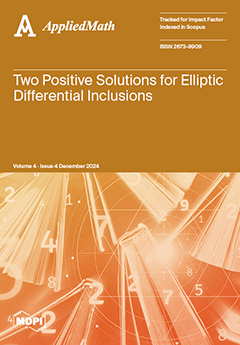The computer network has fundamentally transformed modern interactions, enabling the effortless transmission of multimedia data. However, the openness of these networks necessitates heightened attention to the security and confidentiality of multimedia content. Digital images, being a crucial component of multimedia communications, require robust
[...] Read more.
The computer network has fundamentally transformed modern interactions, enabling the effortless transmission of multimedia data. However, the openness of these networks necessitates heightened attention to the security and confidentiality of multimedia content. Digital images, being a crucial component of multimedia communications, require robust protection measures, as their security has become a global concern. Traditional color image encryption/decryption algorithms, such as DES, IDEA, and AES, are unsuitable for image encryption due to the diverse storage formats of images, highlighting the urgent need for innovative encryption techniques. Chaos-based cryptosystems have emerged as a prominent research focus due to their properties of randomness, high sensitivity to initial conditions, and unpredictability. These algorithms typically operate in two phases: shuffling and replacement. During the shuffling phase, the positions of the pixels are altered using chaotic sequences or matrix transformations, which are simple to implement and enhance encryption. However, since only the pixel positions are modified and not the pixel values, the encrypted image’s histogram remains identical to the original, making it vulnerable to statistical attacks. In the replacement phase, chaotic sequences alter the pixel values. This research introduces a novel encryption technique for color images (RGB type) based on DNA subsequence operations to secure these images, which often contain critical information, from potential cyber-attacks. The suggested method includes two main components: a high-speed permutation process and adaptive diffusion. When implemented in the MATLAB software environment, the approach yielded promising results, such as NPCR values exceeding 98.9% and UACI values at around 32.9%, demonstrating its effectiveness in key cryptographic parameters. Security analyses, including histograms and Chi-square tests, were initially conducted, with passing Chi-square test outcomes for all channels; the correlation coefficient between adjacent pixels was also calculated. Additionally, entropy values were computed, achieving a minimum entropy of 7.0, indicating a high level of randomness. The method was tested on specific images, such as all-black and all-white images, and evaluated for resistance to noise and occlusion attacks. Finally, a comparison of the proposed algorithm’s NPCR and UAC values with those of existing methods demonstrated its superior performance and suitability.
Full article





